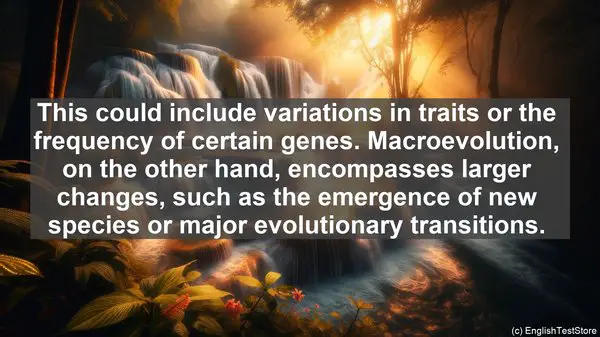Introduction: The Complexity of Human Evolutionary Biology
Welcome to today’s lesson on the top 10 commonly confused words in human evolutionary biology. As a field that delves into the origins and development of our species, human evolutionary biology is fascinating, but it can also be intricate. One aspect that adds to the complexity is the presence of words that are similar but have distinct meanings. In this lesson, we’ll unravel these terms, ensuring you have a solid grasp on their significance.

1. Homology vs. Homoplasy: Decoding Structural Similarities
When studying the anatomy of different organisms, we often come across structures that appear similar. However, it’s crucial to differentiate between homology and homoplasy. Homology refers to structures that have a common evolutionary origin, indicating a shared ancestry. On the other hand, homoplasy denotes structures that may look alike but evolved independently, often due to similar environmental pressures. Understanding this distinction helps us trace the evolutionary history of various traits.
2. Convergent Evolution vs. Divergent Evolution: Unraveling Pathways
Convergent evolution and divergent evolution are two concepts that describe the patterns of species’ development. Convergent evolution occurs when unrelated species, often in similar environments, independently evolve similar traits. This is evident in the streamlined bodies of dolphins and sharks. Divergent evolution, on the other hand, is the process where a common ancestor gives rise to different species, each with unique characteristics. The Galapagos finches exemplify this, with their diverse beak shapes and sizes.
3. Paleontology vs. Archaeology: Exploring the Past
While both paleontology and archaeology involve studying the past, they focus on different aspects. Paleontology primarily deals with the fossil record, unraveling the history of life on Earth. It helps us understand the evolution of various organisms, including our own species. Archaeology, on the other hand, delves into human history through artifacts, structures, and other cultural remains. By examining these, archaeologists piece together the story of past civilizations.
4. Hominid vs. Hominin: Navigating Human Ancestry
When discussing human evolutionary biology, the terms ‘hominid’ and ‘hominin’ often arise. Hominid is a broader category that includes modern humans, our extinct ancestors, and the great apes. Hominin, on the other hand, refers to the lineage that includes modern humans and our closest extinct relatives, such as Homo erectus and Neanderthals. This distinction helps us classify and understand the various branches of our ancestral tree.
5. Macroevolution vs. Microevolution: Grasping the Scale
Evolution occurs at different scales. Microevolution refers to small-scale changes within a population, often observable over a few generations. This could include variations in traits or the frequency of certain genes. Macroevolution, on the other hand, encompasses larger changes, such as the emergence of new species or major evolutionary transitions. Understanding these scales is crucial in comprehending the mechanisms and patterns of evolution.
6. Adaptation vs. Acclimation: Responding to the Environment
Organisms have various ways of coping with environmental challenges. Adaptation refers to heritable traits that enhance an organism’s fitness in a particular environment. These traits are the result of natural selection acting over generations. Acclimation, on the other hand, is a reversible, often short-term response to environmental changes. For example, humans may acclimate to high altitudes by temporarily increasing their red blood cell production. Both processes are vital for survival in changing habitats.
7. Phylogeny vs. Ontogeny: Tracing Lineages
Phylogeny and ontogeny are two approaches to understanding the relationships between organisms. Phylogeny focuses on the evolutionary history of species, mapping out their connections through methods like cladistics. Ontogeny, on the other hand, examines the development of an individual organism from fertilization to adulthood. By studying both, we gain insights into the broader patterns of evolution as well as the intricacies of an organism’s growth and maturation.
8. Anagenesis vs. Cladogenesis: Evolutionary Pathways
When it comes to the evolution of species, two main pathways can be observed. Anagenesis, also known as phyletic evolution, refers to the gradual transformation of a single lineage over time. This could involve changes in morphology, behavior, or other traits. Cladogenesis, on the other hand, is the process where a single lineage splits into two or more distinct lineages. Both these pathways contribute to the diversity of life on Earth.
9. Genetic Drift vs. Gene Flow: Shaping Populations
In populations, genetic changes can occur through various mechanisms. Genetic drift refers to the random fluctuations in gene frequencies, often more pronounced in smaller populations. This can lead to the loss or fixation of certain alleles. Gene flow, on the other hand, is the transfer of genes between populations through migration. It can introduce new genetic variations and potentially increase the diversity within a species.
10. Paleolithic vs. Neolithic: Understanding Human History
The Paleolithic and Neolithic periods are crucial in human history. The Paleolithic, often referred to as the Old Stone Age, spans a significant portion of human existence, characterized by hunting and gathering lifestyles. The Neolithic, or New Stone Age, marks the transition to agriculture and the establishment of settled communities. This shift brought about significant changes in human society, including the development of complex civilizations in later periods.

